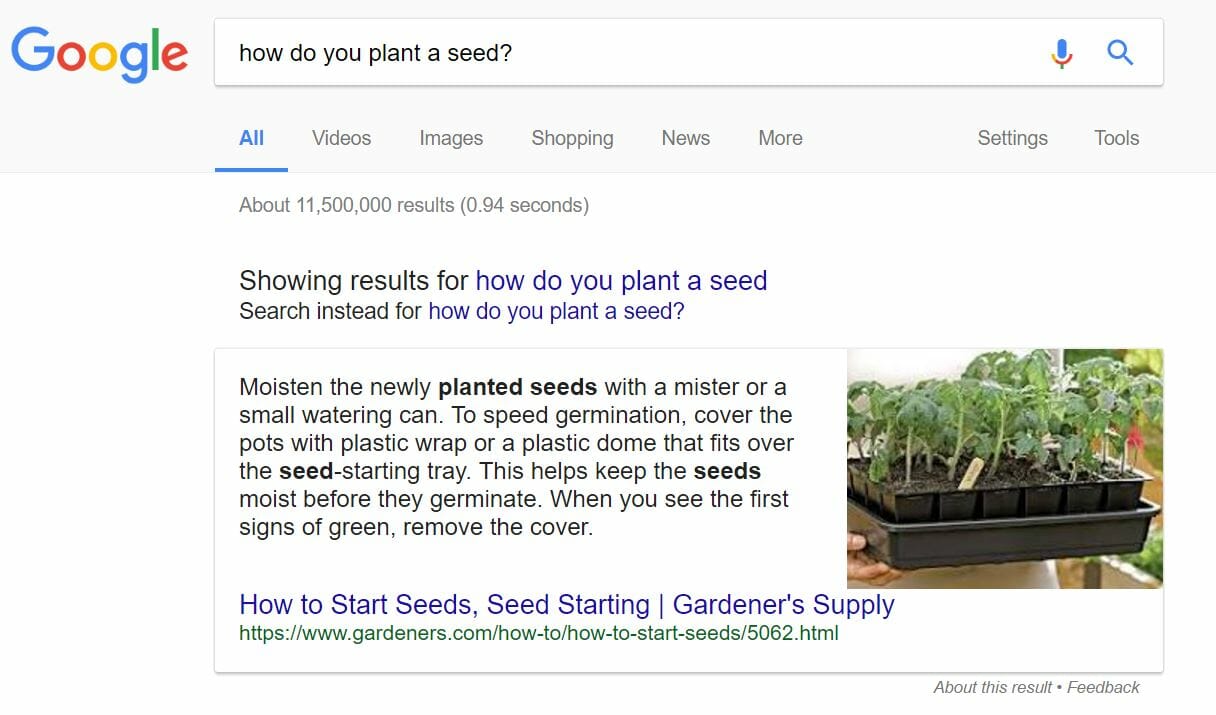The way Google has looked over the last ten years has pretty much stayed the same, all exempt small minor changes here and there. One change that has occurred, on the whole, a little unnoticed (possibly because it works so well), is the introduction of feature snippets. Feature snippets are snippets that appear at the top of organic search results on Google which display the answers to whatever has been searched.
For example, if I searched for ‘how do you plant a seed?’, a feature snippet appears, automatically determined by Google, for which the search engine feels best answers the question/query of the search phrase, hence improving the experience the web user has with Google.
In terms of SEO, feature snippets are amazing – they significantly improve the SEO of an article because feature snippets:
- Automatically push your article to the top of search results, as well as maintaining your current position in normal search results
- Gives your article the most amount of exposure, from increasing the area it has on search results
- Gives your article and website a high quality content reputation, since only the best content that addresses the search phrase searched for goes into feature snippets (if there is no quality content to feature as a feature snippet for a certain search phrase, Google will simply not show any feature snippet).
Take an example of a search phrase for one of my websites. Not only have I got a feature snippet appearing. But, my article ranks number 1 organically anyway, essentially doubling the number of links I have on Google results:
- Use headings. Headings should be used on content to tell Google what each section is specifically about. For example, the above example from my website, PoemAnalysis.com, the feature snippet starts with the heading ‘Mad Girl’s Love Song Summary’. After that, the content expands on the heading title, which Google deems is good enough to use as a feature snippet.
- Use bullet points. Some feature snippets consists of lists, such as how to bake a cookie, where instructions are needed in a certain order.
- Address things short and sweet. Feature snippets are limited to roughly a maximum word count of 50 words. Therefore, try and keep explanationss and sentences to this, so that there are more sentences that could be used as a feature snippet.
Ultimately, there is no definitive way to get content to become a feature snippet. However, from implementing the above, you will make it more likely to happen for your own content.




